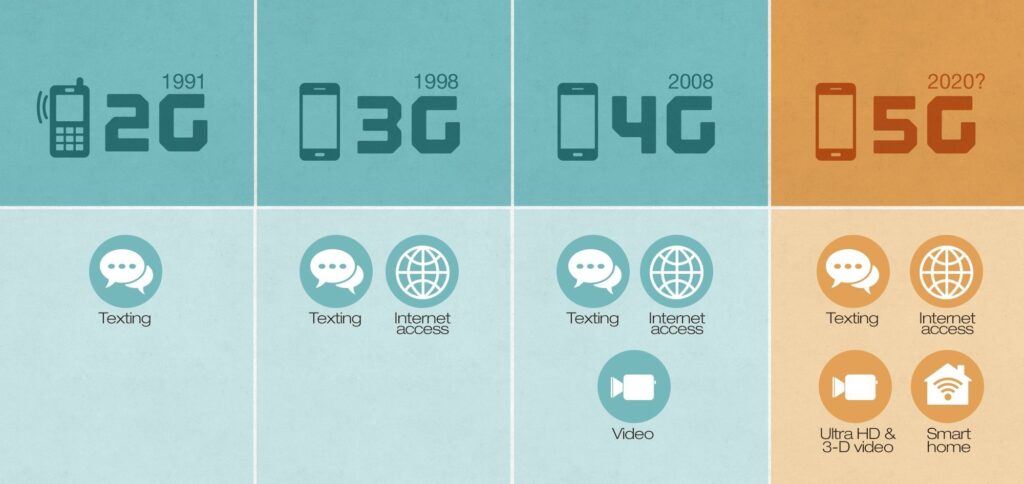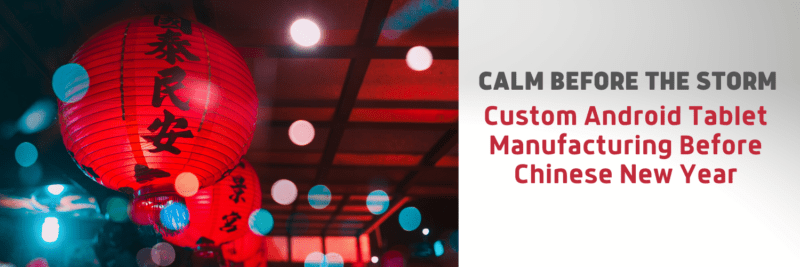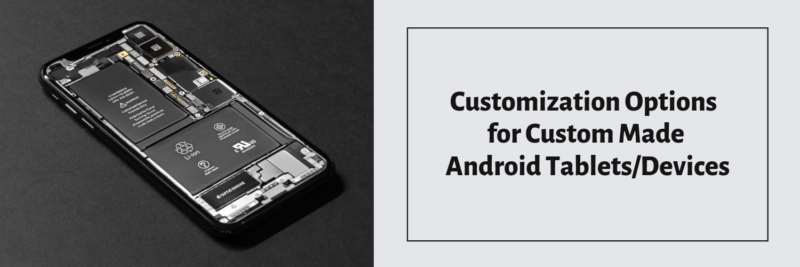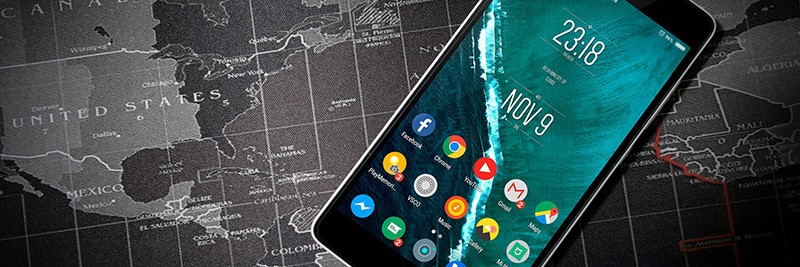
In the early days of mobile phones, a single phone could be used around the world relatively easily. In the 2G era the whole world used a total of 4 bands so a ‘quad band phone’ could support voice and (where available) data services anywhere. Newer generations of cellular technology got more complicated with different mobile networks choosing different wireless protocols and frequencies to operate on. As a phone’s compatibility with more networks increases so does the complexity of electrical engineering.
It became more difficult for phones to provide global coverage on networks starting with 3G. As the presence of IoT connectivity and custom Android devices grows Hatch shares what to consider when designing a phone for optimal global coverage.
Generations of Wireless Telecom Protocols
The 2G network uses the GSM standard. 4 frequencies 850, 900, 1800, and 1900MHz covered all the world’s main markets. Most phones only supported dual bands, but it was easy to find quad band options also.
3G introduced incompatible network standards. Phones that were built for UMTS often didn’t support CDMA. Plus within each of the different 3G networks there were at least 5-6 different frequencies. Only a few high end phones provided global coverage on 3G. Generally more expensive phones and telecom devices support a wider range of frequencies than lower cost ones.

4G also introduced incompatible networks, but the LTE network had much better coverage than the competing WiMax technology. Across the world there are over 10 commercially used frequencies on the LTE network. More than most phones can support.
5G looks to keep things more simple. The 5G NR (New Radio) network has been introduced in a handful of countries and doesn’t appear to have any rival standards, although there are over 15 different frequencies on this network.
Decommissioning of Older Networks
In many countries legacy 2G and 3G networks are shutting down. Mobile networks try to move subscribers to the newer networks so they can cut the costs of maintaining older networks.
Backwards Compatibility
Phones with the newest wireless technology are backwards compatible. That means the newest phone which supports 5G will also support 2G, 3G, and 4G (wherever those networks exist).
New Network Benefit
Newer wireless standards, like 5G, are great for quickly consuming tons of data. Older generations offer slower data rates. Mobile users who want to stream high res movies or play graphics rich video games have the best user experience on 5G, but for many IoT or lower data use cases even 2G sufficies.

Designing a Global Android Telecom Device
If you’re making a custom Android telecom device to use globally the key details to consider in regards to choosing frequencies are outlined below, based on the information provided above.
First consider the device’s data consumption profile. If it doesn’t consume a lot, for simple IoT purposes or low data applications, 2G will keep you in business. Obviously if your application requires more data consumption then 2G may fall short. Then research which networks your SIM card will roam on in different countries where the device will be used. The roaming networks are determined by the roaming agreements of the original SIM card provider.
Next check whether the countries where the device will be used still have 2G (or 3G) networks. Information about countries sunsetting 2G and 3G networks is easy to find on Wikipedia (where information for this article comes from). Then research which networks your SIM card will roam on in different countries where the device will be used. The roaming networks are determined by the roaming agreements of the original SIM card provider. Notice which networks and frequencies overlap the most between different countries based on the carriers your device will use. What often happens is that not all the bands within one generation (ie, 4G) can be covered by one device. This happens because so many different frequencies exist around the world. To overcome this, start to look at which frequencies on other generations (ie, 3G) are most used by the roaming partner networks. The idea is to aggregate the most overlapping networks in different countries so that the device can work anywhere it needs to on at least one generation (2G, 3G, 4G, or 5G).

Designing a phone with multiple custom ranges of frequencies.
Traditionally the frequency bundles in mobile phones are broken into US, Asia, and EU regions. In each regional configuration the frequencies are all set to serve that local market for best coverage across all generations. That’s a different logic than getting as much coverage as possible globally. Most generic mobile phone suppliers allow the wholesale buyer to choose the regional configuration before manufacturing. For example if buying phones to use in the US then the buyer would choose US configuration.
When making a custom Android device you can choose which bands the device supports based on your specific needs. Up to 3 custom configurations can be created, so you don’t need to stick with the traditional US, EU, and Asia configurations.
Looking to the Future
In the world of technology having common standards sometimes works better than having options. There are varied reasons for the existence of competing standards, however financial interests probably have the biggest impact. Whatever new roads appear as you pursue making a custom Android device, Hatch is there to help navigate them. 🙂








